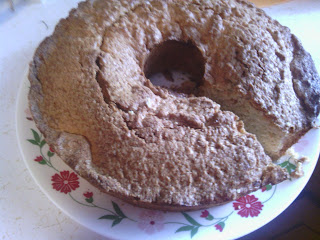There are upsides & downsides to historic cookery. I get to produce some of the best food that I have ever tasted, but I have to do it over a hot fire. A majority of us that do historic cooking demonstrations do so over open hearths in historic kitchens or in fire pits outside. Unless its really cold outside, the answer is yes, I am hot. But, I do so for my own safety. Very rarely do I cook when I am not "in costume", meaning I am fully dressed from the 19th century. Chemise, drawers, corset, petticoats, dress, apron, stockings, boots. Yes, 8 pieces of clothing, and yes it does get hot, but like food, I want to do it right. But sometimes, it can be hazardous with big skirts around open fires.
Fire safety is a real issue. There is always the threat of flames catching skirts at just the wrong time. In our historic kitchen at work we keep fire extinguishers nearby, in camps there are always buckets of water just in case. Some of the ways we can help keep such a thing from happening is to look at images from the past.
 |
| "Shake Hands" Lilly Martin Spencer |
 |
| CDV C. 1860s |
What do we notice from both of these images? Both are ladies are in kitchen settings from the mid-19th century. They are wearing their clothing in a similar manner. We see that the skirt of the dress is pulled up and pinned/tucked behind the body (even the baby in the CDV, just like mom!).Pulling the skirt up has revealed that these ladies are wearing a "work petticoat", or a petticoat that is not white, probably made of wool. Both wearers have also shortened their sleeves. It is unclear in the Spencer painting if the sleeves are pushed up or indeed short sleeves like those seen in "Kiss Me and You'll Kiss the Lasses". In the CDV it is obvious that "mom" has unbuttoned her sleeves and pushed them up out of the way. One thing we cannot really tell from these images is that "work" dresses usually had shorter skirts so that feet did not get tangled up in the hem. This look can be easily replicated.
 |
| Photo Credit: Leslie Macon |
If you will be cooking on an open fire, I strongly recommend a wool work petticoat & a wool work apron. Wool will smolder rather than catch the flame. There are constant reminders in living history circles about the importance of natural fibers. Not only are they accurate, but they are safer. Modern fibers such as rayon and polyester burn quicker than cotton, linen & wool. Chemically enhanced fabrics also melt, and can melt to the skin causing worse injuries. No fabric itself is fire retardant, so be careful with whatever you wear.






